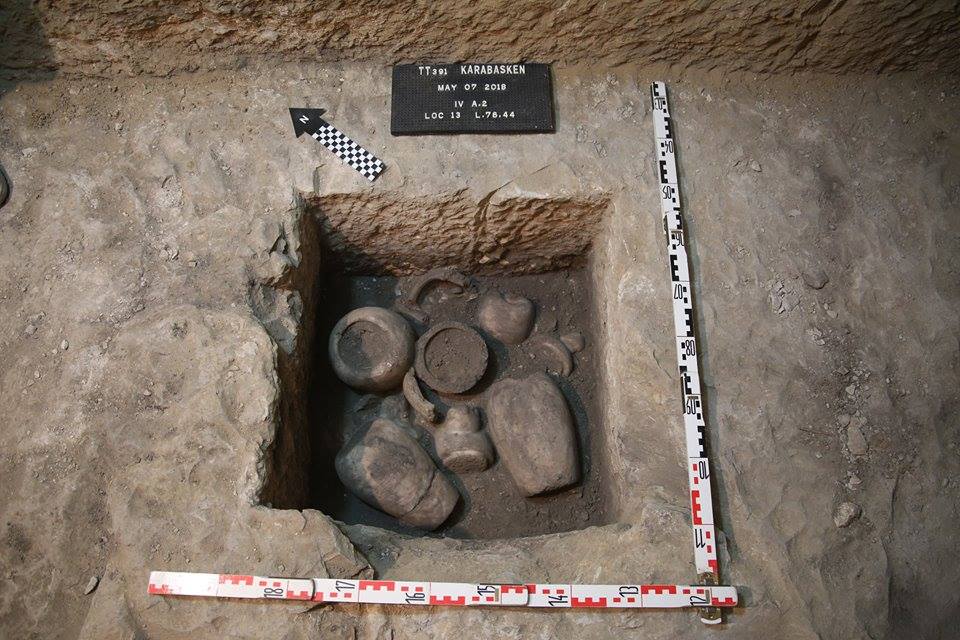An Egyptian-American mission from the South Asasif conservation project has discovered a well-preserved collection of canopic jars dating to the 26th Dynasty in Karabasken’s tomb on the West Bank of Luxor. Dr. Mostafa Waziri, General Secretary of the Supreme Council of the Ministry of Antiquities, who made the announcement of the discovery, said the canopic jars were found in an almost cube-like cutting in the floor measuring approximately 0.60m by 0.60m and 0.50m deep into the southside wall of the Kushite tomb of Karabaske (TT 391) in the South Asasif Necropolis. Canopic jars were particularly important in ancient Egypt as they used to store the internal organs of the deceased during the mummification process. The jars have been affected by the pressure of floodwater and one of them has even broken into several fragments under the pressure. In an effort to preserve the remains, a restoration team performed emergency cleaning and consolidation on the pieces. Although the floodwater damaged the contents of the jars, they still contained a large amount of resin. The jars (with lids) which vary from 35.5cm to 39.4cm in size have lids depicting a human, a…
Egyptian-American Mission Discovers Ancient Canopic Jars in Luxor Tomb
June 26, 2018



